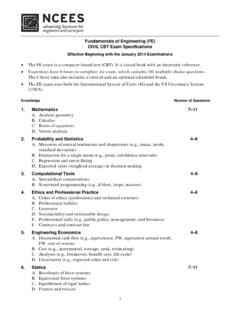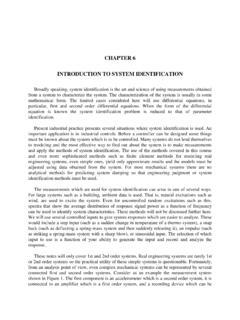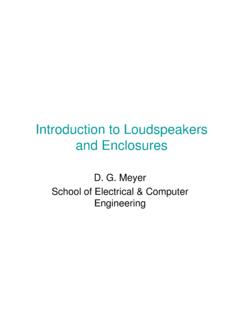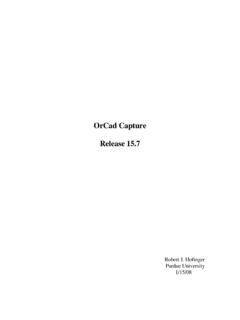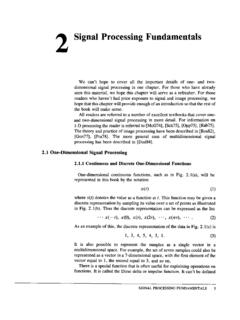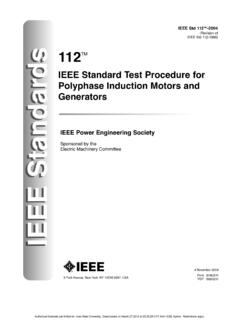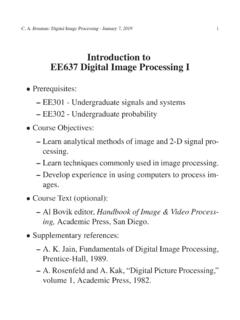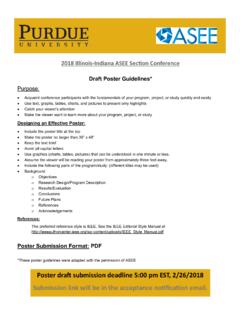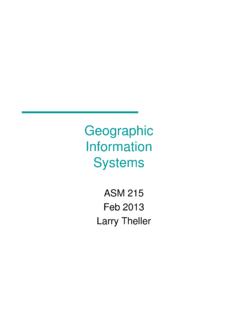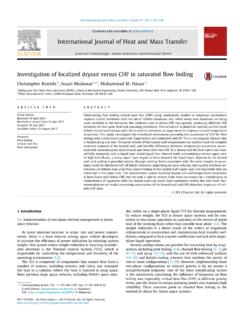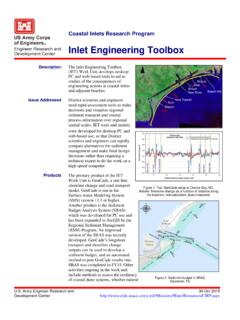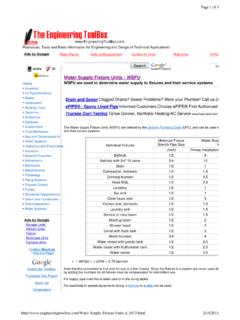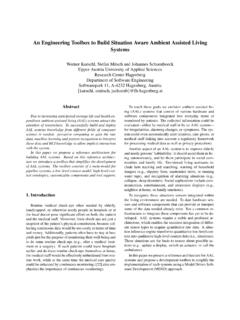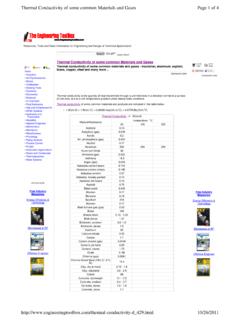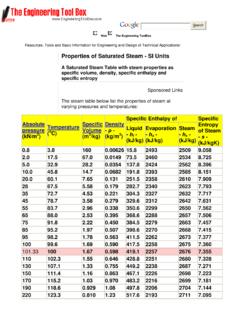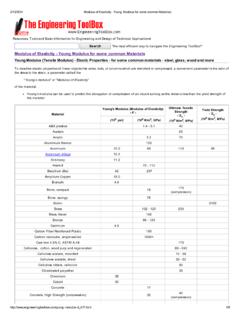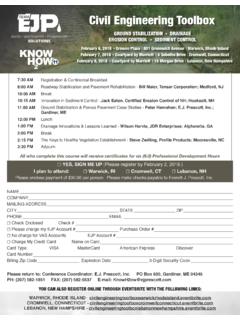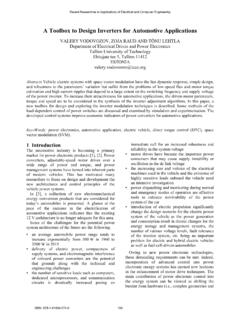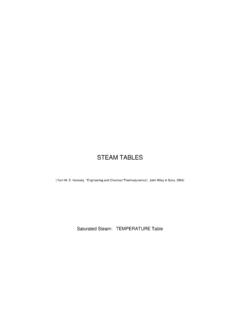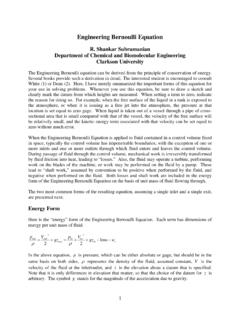Transcription of Auditory Toolbox - Purdue Engineering
1 Auditory Toolbox1 Auditory Toolbox Version 2 Malcolm SlaneyTechnical Report #1998-010 Interval Research 2 Auditory Toolbox3 Auditory Toolbox :A M ATLAB Toolbox for Auditory Modeling Work Version 2 Malcolm SlaneyInterval Research 1993-1994 Apple Computer, Inc. 1994-1998 Interval Research CorporationAll Rights ReservedThis report describes a collection of tools that implement several popular Auditory models for a numerical program-ming environment called M ATLAB . This Toolbox will be useful to researchers that are interested in how the Auditory periphery works and want to compare and test their theories. This Toolbox will also be useful to speech and Auditory engineers who want to see how the human Auditory system represents version of the Toolbox fixes several bugs, especially in the Gammatone and MFCC implementations, and adds several new functions.
2 This report was previously published as Apple Computer Technical Report #45. We appreciate receiving permission from Apple Computer to republish their code and to update this are many ways to describe and represent sounds. The figure below shows one taxonomy based on signal dimensionality. A simple waveform is a one-dimensional representation of sound. The two-dimensional representa-tion describes the acoustic signal as a time-frequency image. This is the typical approach for sound and speech analy-sis. This Toolbox includes conventional tools such as the short-time-Fourier-Transform (STFT or Spectrogram) and several cochlear models that estimate Auditory nerve firing probabilities as a function of time.
3 Finally, the next level of abstraction is to summarize the periodicities of the cochlear output with the correlogram. The correlogram provides a powerful representation that makes it easier to understand multiple sounds and to perform Auditory scene types of Auditory time-frequency representations are implemented in this Toolbox :1)Richard F. Lyon has described an Auditory model based on a transmission line model of the basilar membrane and followed by several stages of adaptation. This model can represent sound at either a fine time scale (probabilities of an Auditory nerve firing) or at the longer time scales characteristic of the spectrogram or MFCC analysis. The LyonPassiveEar command implements this particular ear )Roy Patterson has proposed a model of psychoacoustic filtering based on critical bands.
4 This audi-tory front-end combines a Gammatone filter bank with a model of hair cell dynamics proposed by Ray Meddis. This Auditory model is implemented using the MakeERBF ilters , ERBF ilterBank , and MeddisHairCell )Stephanie Seneff has described a cochlear model that combines a critical band filterbank with mod-els of detection and automatic gain control. This Toolbox implements stages I and II of her ) Conventional FFT analysis is represented using the spectrogram. Both narrow band and wide band spectrograms are possible. See the spectrogram command for more )A common front-end for many speech recognition systems consists of Mel-frequency cepstral coef-ficients (MFCC). This technique combines an Auditory filter-bank with a cosine transform to give a rate representation roughly similar to the Auditory system.
5 See the mfcc command for more infor-mation. In addition, a common technique known as rasta is included to filter the coefficients, simu-lating the effects of masking and providing speech recognition system a measure of environmental )Conventional speech-recognition systems often use linear-predictive analysis to model a speech signal. The forward transform, proclpc , and its inverse, synlpc are work has concentrated on how to capture and represent the information in our Auditory environment. Towards this TimePressureTimeCochlearPlaceCochlearPla ceAutocorrelation LagTimeAutoCorrelationWaveformSpectrogra m/CochleagramCorrelogramTime-FrequencyAn alysis 4goal, we have been investigating the correlogram.
6 The primary goal of the correlogram is to summarize the temporal activity at the output of the cochlea. With most sounds, and especially with voiced speech, much of the information in the waveform and cochlear output is repetitive. The correlogram is an easy way to capture the periodicities and make them visible. This Toolbox includes several routines to compute and display correlograms, and to compute pitch esti-mate from Toolbox has a very simple view of data. Sound waveforms are stored as one-dimensional arrays. The output from cochlear models is stored as a two-dimensional array, each row representing one neuron s firing probability, and col-umns of the matrix representing firing probabilities on the Auditory nerves at one time.
7 Correlograms can be stored as either movies or as an array. Filter coefficients are either stored as lists, like the M ATLAB filter function, or second-order-sections are stored as a list of five of the Auditory routines in this Toolbox are demonstrated using the same speech signal. This test sound is sup-plied as the file and can be imported into M ATLAB using the wavread function. This signal is a female speaking saying A huge tapestry hung in her hallway and is from the TIMIT speech database (TRAIN/DR5/FCDR1/SX106 ).This report is not a detailed description of each Auditory model. Most function descriptions include references to more detailed descriptions of each software has been tested on Macintosh and Windows95 computers running M ATLAB and on SGI and Sun workstations.
8 All of this code is portable so we don t expect any problems when running on any other machine that runs M ATLAB .There are several other packages of Auditory models. They have slightly different philosophies and coding styles. Roy Patterson and his colleagues in Cambridge UK have a package called the Auditory Image Model (AIM). Written in C, this package allows many different models of Auditory perception to be linked together. More information about the AIM model is available at similar package has been written by Ray Meddis and Lowel O Mard. More information about LUTEAR is avail-able at , a word from our lawyers:Warranty Information: Even though Interval has reviewed this software, Interval makes no warranty or representation, either express or implied, with respect to this software, its quality, accuracy, merchantability, or fitness for a particular purpose.
9 As a result, this software is pro-vided as is, and you, its user, are assuming the entire risk as to its quality and flowchart showing how all the commands in this Toolbox fit together is shown in the next section. Installation This Toolbox is supplied as a collection of M ATLAB m-functions and three MEX functions written in C. The three MEX functions, agc , soscascade , and sosfilters , are precompiled for the Macintosh. You will need to compile them yourself for other machines using the Mathworks mex function. Use the example code, included with this documen-tation, to test each m-function called test_auditory is provided to quickly run through all the examples provided in this documentation.
10 Use this function to test whether all functions are performing according to the documentation. Flow ChartsAuditory Toolbox5 Flow Charts This section shows which routines are used by each function in this Toolbox . This will help readers understand the structure of the cochlear models. Page numbers are shown in parenthesis. Lyons Passive Long Wave Cochlear ModelPatterson-Holdsworth ERB Filter BankSeneff Auditory ModelAlternate Analysis TechniquesCorrelogram ProcessingDemonstrationsagc (6)sosfilters (47)DesignLyonCascade (15)EpsilonFromTauFS (17)soscascade (46)SetGain (44)SecondOrderFilter (37)LyonPassiveEar (21)MakeERBF ilters (24)MeddisHairCell (27)ERBF ilterBank (18)SeneffEar (39)SeneffEarSetup (42)mfcc (29)spectrogram (49)proclpc (33)synlpc (50)rasta (35) CorrelogramFrame (10)CorrelogramArray (8)CorrelogramMovie (11)CorrelogramPitch (12)MakeVowel (26)FMPoints (19)WhiteVowel (52) agc6 agc Purpose Adaptation process for Lyon s passive longwave cochlear model Synopsis [output, state] = agc(input, coeffs, state)
